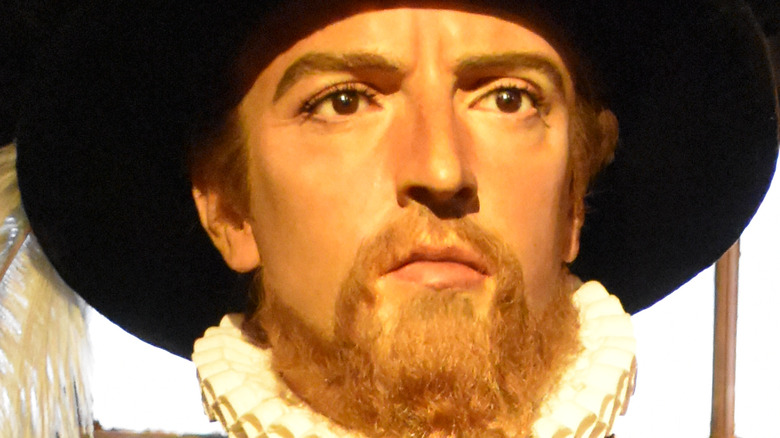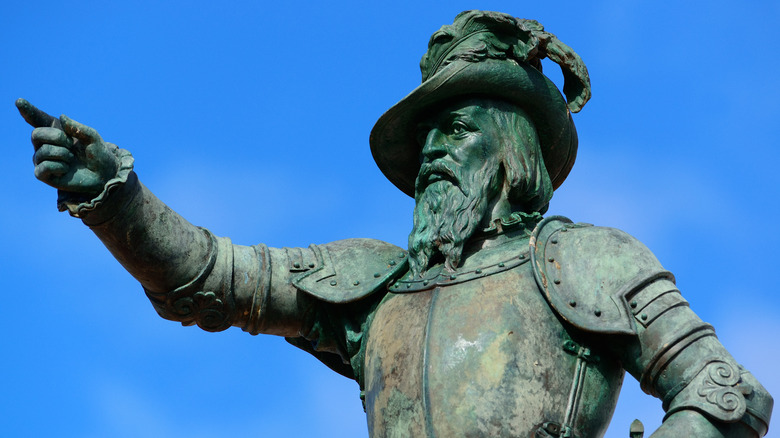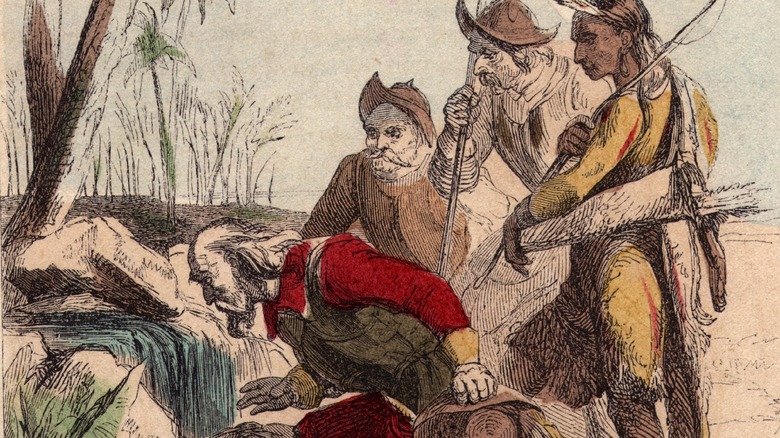Here's How Ponce De Leon Made His Fortune
Ponce de Leon is the Spaniard who is credited with discovering Florida. In most people's minds, de Leon is perhaps best remembered for his supposed quest to discover the fabled Fountain of Youth, and as such was one of the world's most memorable European explorers. However, as reported by Biography, de Leon was far more than just an explorer. In his 61 years, he also served in the military, searched for gold and established mines, set up farming communities and other colonies, and helped plan and build defense structures to protect those communities.
By some accounts, de Leon was revered for his ability to interact and negotiate with native populations without violent confrontation. He also has received harsh criticism for forcing some of the natives into slavery. Biography reports he was blamed for introducing devastating diseases, including measles and smallpox, to the native communities, with catastrophic results.
As many of his endeavors required funding, people have questioned where de Leon got his money, his education, and how he continued to fund his exploration and the formation of the communities.
Biography reports Ponce de Leon was born in Santervás de Campos, Spain, in 1460. Although his family was part of Spain's nobility, they were not wealthy. As a young man, Ponce served as a page for the royal court of Aragon. He later joined the Spanish military, where he fought in the campaign against the Moors in Granada. As reported by History, he was eventually named a captain in the military. With that success, he also developed an interest in exploration.
A majority of Ponce de Leon's exploration was funded by the Spanish crown
It is believed that de Leon joined Christopher Columbus' 1493 expedition. That would undoubtedly make for an interesting story, but as reported by Biography, there is no official record that de Leon was part of the expedition. In the years following the conclusion of Columbus' second expedition, de Leon began exploring the Caribbean and the regions that are now the Dominican Republic and Haiti on behalf of the Spanish crown. Biography reports that de Leon "employed the skills and tactics he'd learned in the military to subdue and control the native peoples of the Caribbean."
He established several new farming colonies in the Caribbean, which were expected to become part of Spain. The success of the colonies prompted the Spanish crown to sponsor de Leon's exploration of Puerto Rico, which was rumored to be a rich source of gold. Within one year of his arrival, de Leon's expedition to Puerto Rico was determined to be a success. He managed to find gold, and the location was deemed to be perfect for future opportunities. In recognition of his discoveries, de Leon was named the governor of Puerto Rico. He also married a woman named Leonora, with whom he had three children. In time, his family would move with him to Puerto Rico.
Daily Dose Now reports de Leon amassed immense wealth in Puerto Rico. In addition to being the governor, his gold mines and plantations provided him with a steady flow of income. Even with this success, de Leon was not done exploring.
Ponce de Leon did not stop exploring until he was killed
Following his successes in the Caribbean and Puerto Rico, the Spanish crown sponsored de Leon for further travel and exploration. In addition to monetary compensation, the crown offered him exclusive rights and governorship of any lands he discovered. In 1513, de Leon discovered what he thought was another island, but was actually a peninsula that was part of North America. As reported by Biography, he named the land Florida, which means "flowery," as he was impressed with the plentiful flowers growing throughout the region.
Legend suggests de Leon traveled to Florida to find the legendary Fountain of Youth. However, Daily Dose Now reports there is no verifiable evidence that that was his motivation. Instead, he was likely seeking suitable land to settle new colonies for Spain. King Ferdinand died in 1516, and much of de Leon's land was under threat by natives and other settlers. Yet his more established plantations and mines continued to provide de Leon with income until his death in 1521.
As reported by Biography, Ponce de Leon was fatally wounded during his second expedition to Florida. According to reports, he was attacked by Calusa warriors, who wounded him with an arrow that was likely poisoned. Although he lived long enough to travel back to Cuba, he died shortly after his arrival.


